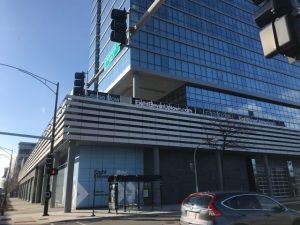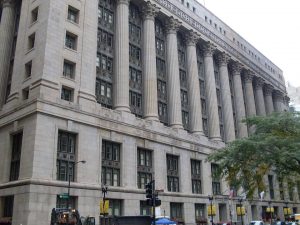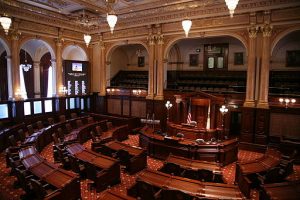Curtis Black from the Community Media Workshop’s Newstips blog covered Mayor Rahm Emanuel’s TIF Task Force public forum in Bronzeville last week. Here is an excerpt from his story, or you can read the full article here. ChicagoTalks and partner website AustinTalks have also diligently investigated the city’s TIF program and how it has helped Chicago’s most economically struggling neighborhoods.
Bronzeville residents turned out in impressive numbers for last Thursday’s public forum of the Mayor’s Task Force on TIF Reform, which was held at the Bronzeville Chicago Military Academy.
Other communities were represented, but more forums in additional communities would certainly offer the task force greater breadth of public input. But last week’s was the only hearing that is planned.
Bronzeville is one of the city’s most heavily TIFed communities, with thirteen TIF districts covering 80 percent of the area, many created to finance CHA redevelopments – with more in the works had Mayor Daley won the 2016 Olympic games, according toHousing Bronzeville.
Sheila Carter testified on behalf of the group that TIFs have “failed local taxpayers” in their lack of transparency and accountability. It’s been “virtuallly impossible for local residents to understand how TIF monies were being raised and spent in our area,” she said, suggesting “this confusion and lack of documentation was intentional.”
She slammed Daley’s skimming of $10 million from the King/47th TIF to help fill last year’s budget gap, saying it was done without community consultation. “No TIF money is ‘surplus’ in Bronzeville when our development needs are so great,” she said.
And TIF projects driven by outside developers and downtown planners have ignored long-range planning by local organizations, she said.
A housing plan for Bronzeville
In referendums held in 2004 and 2008, Housing Bronzeville won overwhelming voter support for a proposal to create a Bronzeville Housing Trust Fund to develop affordable housing on 500 of the nearly 2,000 city-owned vacant lots in the area.
The group was in discussions with the city over a pilot project along those lines, possibly using TIF funds to cover some costs, but talks are on hold since the new administration entered office, Rev. Jeffrey Campbell, executive director of the Lugenia Burns Hope Center, told Newstips.
Among many other Bronzeville residents who spoke, Sandra Bivens of the 51st Street Business Association proposed using neighborhood business groups which serve as delegate agencies for the city to monitor TIFs and conduct outreach to residents. “The community has yet to see a report on the number of jobs and small businesses created by TIF,” she said
Bernard Loyd, a local entrepreneur who’s getting TIF funding for a commerical development at 51st and Prairie, pointed out that Bronzeville TIFs have heavily favored residential projects and done little to create local jobs. The program is geared toward large corporations, and approaches aimed at small businesses should be included, he said (more below).
Pilsen, Englewood, Austin
Other communities were represented. “In Pilsen, TIF has been used as a tool to eliminate affordability and displace working-class families,” said Rosalie Mancera of the Pilsen Alliance.
“In Pilsen, TIF has not benefied the larger community; it has benefited private developers.,” she said. “We are subsidizing our own displacement. This is wrong.”
Cherice Price of the Residents Association of Greater Engelwood called for training elected officials so they can promote TIF opportunities to district residents. “People in our community may not even know there’s a TIF, and they don’t know how to go about applying,” she said. “It’s people outside our community who are taking advantage of the opportunities.”
She called for a single advisory committee that would provide local oversight for several TIFs in Englewood.
Dwayne Truss of the South Austin Coalition challenged task force chair Carole Brown’s assertion that “TIF collections do not come at the expense of other taxing bodies.” (In fact, as all readers of Ben Joravsky know, TIFs freeze property tax revenues going to the city, county, schools, and parks, and divert any additional revenue to a separate development fund.)
“We know that the money you give to corporate welfare comes out of our communities,” Truss said. He called for an emphasis on jobs, pointing to a $3 million subsidy to Coca Cola to move a bottling plant from Little Village to Austin (AustinTalks recently reported the plant employs only 28 residents of the Austin area). “How many teachers, how many park district jobs, would that money have saved?” he asked.
Related articles
- TIF program designed to benefit struggling neighborhoods does little to help Chicago’s most-populated community (austintalks.org)
- Just a Handful of Private-Sector TIF Projects Approved in Austin over the Last Decade (austintalks.org)
- TIF Subsidies Given to Chicago Companies, Nonprofits Bypass City Neighborhoods in Need of Jobs (chicagotalks.org)
- Challenges Remain in Getting TIF Information in Chicago (chicagotalks.org)













Be First to Comment